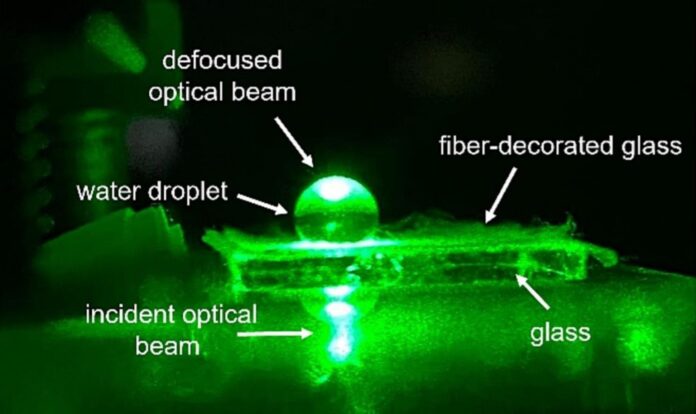Filipino scientists developed affordable and dynamically adjustable water-based lenses with various potential future applications, including in classrooms, research labs, cameras, and wearable gadgets.
Ateneo de Manila University physicists led a team of researchers from Caraga State University, Pangasinan State University, and the University of the Philippines Diliman to make the low-cost liquid lenses.
The researchers created a hydrophobic surface that could hold a water droplet in a dome shape similar to a magnifying glass by coating an ordinary glass slide with specially prepared polyvinyl chloride (PVC) plastic.
They found that by adding or removing water from the droplet, they could change and control the magnifying power of the liquid lens with minimal loss or distortion.Through the process of “electrospinning,” the researchers melted the PVC in an electric field, which stretches out and deposits the plastic onto the glass slide as very fine microfibers. This makes the surface of the slide more water repellent, resulting in the water droplets staying in a spherical dome shape instead of flattening out.
The researchers observed that after placing droplets of different sizes on this surface and then shining a laser through them, the light beam widened or narrowed depending on the droplet’s size.
Larger droplets acted like lenses with longer focal lengths, just as smaller droplets behaved like close-up lenses.
The discovery’s potential practical applications include use in science classrooms to teach optics, particularly in schools with limited lab equipment and in remote or low-resource areas.
It could also help build basic optical tools for experiments or diagnostics, offering a quick way to adjust laser beams even in research labs.
Furthermore, it serves as the foundation for more advanced liquid lenses that could be used in cameras, microscopes, and wearable tech. Additional research could also explore its potential use in portable diagnostic devices or small projection and lighting systems.








